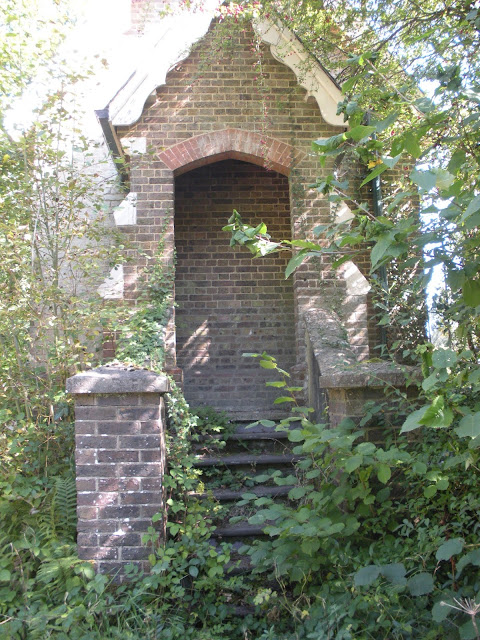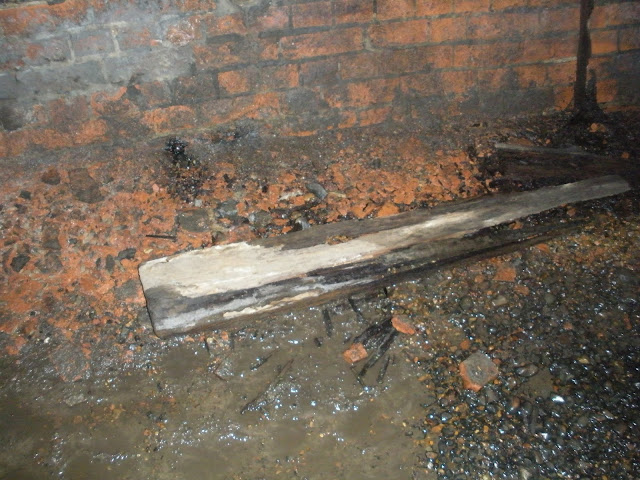Hindsight is a wonderful thing if you have all the information to hand. I have no idea of what the running costs would be today of such an enterprise but can only look at the trends taking place up to closure in 1961. The railway had two income streams; passengers and goods.
Goods traffic was always the mainstay of this railway but today some commodities like coal are no longer used for heating purposes. The remaining railways have since been privatised and all the goods yards seem to have been sold off thus moving all the traffic onto the roads. It is nice to imagine that there would still be a fair amount of farm traffic if the line were still operating but I don't know whether it would still be feasible.
Passenger numbers were light for years, falling to just a couple of hundred a day by the end. I suspect that most of the passengers were travelling to and from work in London or perhaps Paddock Wood (I doubt whether many people were travelling from, for instance Goudhurst to Cranbrook (that is 1 mile from Goudhurst to 2 miles from Cranbrook). However, season ticket holder numbers seem to have been rising. In his book Brian Hart quotes the passenger and season ticket numbers for the years 1938 and 1949, these both showed an increase of 58%. Perhaps the economy was in a better shape after the devastation of the Second World War in that at least it was the start of thirty years growth without a recession. Although passenger numbers were to decline after this I do feel sure that season ticket numbers would have been gradually increasing as more people in these areas were prepared to make the sacrifice of a long commute for better paid jobs in London. My parents for example used all their savings to buy a house on the 'new estate' in Horsmonden because there was a railway station there and my father could get to work in Sevenoaks easily, but by the time the house was built in 1963 the railway had been closed! By the 1980's there must have been at least twenty people on that estate who worked in London (if our car was out of action we could always cadge a lift to Paddock Wood Station from our neighbour or the people over the road).. The 1960's 'baby boom saw two more estates go up in Horsmonden and I am sure similar changes happened in the other villages, so I really believe that if the railway existed today it would have four or five times the number of season ticket holders.
---------
Brian Hart who wrote 'The Hawkhurst Branch' describes how as a young man and a volunteer on the fledgling KESR heritage line he helped to remove some of the signalling from the Hawkhurst Line for use on the KESR and how he felt a sense of guilt doing it. During his time helping to reopen part of the KESR, British Railways wrote to them twice to ask why they did not concentrate on the Hawkhurst Line which was far more viable.
Possible Line Extensions
There were several ideas muted at the end of the Nineteenth Century some of which achieved parliamentary approval. Ambitious projects included terminating at Hastings, Rye, Windchelsea and even Dungeness! I wonder whether the future of the Hawkhurst Branch would have been a little rosier or not if any of the following extensions had taken place. Here are some of the more series proposals.
Looking down the A299 in a southerly direction, a bridge was intended to be built to take
the line across the road from Hawkhurst Station which once stood on our right.
1/ Hawkhurst to Appledore
This was be problematic to begin with as the ground appears to fall away to the east on the other side of where the bridge would be, so it would require extensive engineering in the initial stages. The Line was projected to run close to Benenden, Newenden, Sandhurst, Rolvenden, Tenterden (1.5 miles south of the town) and Appledore (this village already had a station connecting Rye and Lydd with Ashford). The full extension would have meant a further 14.5 miles of track. It must have been an exciting proposal, but looking at a map I do wonder how close to these communities the railway would have been, (perhaps they could have done Sandhurst, Newenden, Wittersham, Appledore but I do not know whether the topography would have allowed this.) Certainly Benenden and Tenterden would be too far north of the general direction of the railway.
Populations as at 2011 census
Benenden 2,374
Newenden 223
Sandhurst 1,478
Rolvenden 1,414
Tenterden 7,735
Appledore 800
The village of Etchingham in Sussex already had a railway station on the Tunbrige Wells to Hastings line and was only six or seven miles from Hawkhurst station 'as the crow flies'. I think it would have been an engineer's headache to build the railway though as the track would have to turn south west which would have meant re-crossing the road further down. The engineers would be obliged to make quite a sharp turn so that the road is not crossed too far down the hill, otherwise enormous embankments would have had to be built to keep the line close to 'the level'.
Population as at 2011 census
Etchingham 1,187
This proposal was
for a railway to Conghurst, Bodium Mill, Mill Corner, Brede Bridge, Doleham and Hastings (no I can't see these places on my road map even.) Again it would have meant crossing the road and somehow swinging south in the direction of Hawkhurst with the additional expense of building and manning stations in tiny hamlets.
Populations as at 2011 census
Conghurst 5? (has a farm!)
Bodium Mill -
Mill Corner -
Brede Bridge -
Doleham -
Hastings 88,000 (approx.)
4/ Cranbrook to Appledore
This would have meant that the line would branch just before Cranbook Station (leaving Cranbrook and Hawkhurst stations as a spur) before reaching Furnace Mill, Hendon Bridge (near Rolvenden), Redhill Bridge and Appledore. Once more the stations would have to be built and manned for tiny hamlets but hopefully this line would have required fewer earthworks in it's construction.
Populations as at 2011 census
Furnace Mill -
Hendon Bridge -
(Rolvenden) 1,414
Redhill Bridge -
Appledore 800
This seems the to me to be the most commercially viable. (It would have run in an arc heading to the north east before veering to the south east after Sissinghurst.) The railway would part just before Cranbrook station and go directly into Cranbrook, near Sissinghurst, south of Biddenden, Tenterden, Reading Street and Appledore. (The original station site earmarked for Cranbrook had been close to the High Street and Stone Street to the south of the town, this would have been a perfect location for a station if they had been able to obtain the land to get there.) If they were able to build it the full length of this extension would be a further 16.5 miles leaving Appledore station at about 61 miles from Charing Cross Station.
Populations as at 2011 census
Cranbrook 6,717
Sissinghurst (a parish of Cranbrook)
Biddendon 2,574
Tenterden 7,735
Reading Street (a parish of Tenterden)
Appledore 800
------------
By 1900 the Kent and East Sussex Railway was opened from Headcorn via Tenterden to Rolvenden. This denied the Hawkhurst Line the prize of Tenterden and by then the appetite for building light railways was on the wane.
------------------------
Where would you have extended the railway to ?
For myself if I had been a director of the railway, I think that I would have swallowed my pride and tried again to extend the railway to Cranbrook and then I would wait to see how successful business was before inventing any more daring schemes.



























































